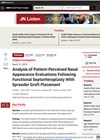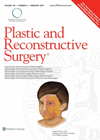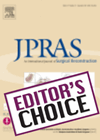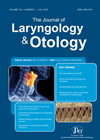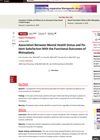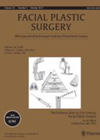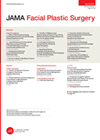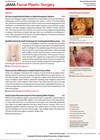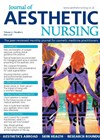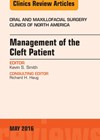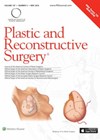
Journal Reviews
Nasal appearance evaluations following spreader graft placement
Widening the nasal dorsum has been one of the major aesthetic concerns after using spreader grafts to improve nasal airway obstruction in patients with nasal valve problems. In this study the authors evaluated the association of functional septorhinoplasty using spreader...
A useful guide for performing non-surgical rhinoplasty
This study details a single-centre, nonrandomised, prospective trial of 150 consecutive patients undergoing non-surgical rhinoplasty using hyaluronic acid fillers. The study’s aim was to develop an injecting protocol for different anatomical anomalies to achieve consistent results. Virgin noses and previously...
Plastic surgery trainees’ exposure to cosmetic surgery during training
Cosmetic surgery is an essential component of plastic surgery training and is required in order to CCT. However, the training opportunities in UK are limited. The current operative requirements for plastic surgery trainees are 100 procedures during specialist training, either...
The relevance of rhinoplasty and septorhinoplasty from the commissioner’s point of view
The rising costs of running the National Health Service and its overburdened resources has led to the constant monitoring of the low clinical value treatments. The operations of rhinoplasty and septorhinoplasty inevitably fall into this group and are subject to...
Mental health status and functional outcomes of rhinoplasty
The authors investigated the impact of mental health on patient satisfaction with rhinoplasty. They responded to the question whether preoperative mental health is associated with satisfaction with functional outcomes of rhinoplasty. They assessed baseline nasal function and postsurgical functional outcomes...
Modified anterior septal transplant
The authors describe an anterior septal graft technique, which consists of complete resection of the caudal septum and reconstruction with extended spreader grafts and a columellar strut, without a separate caudal septal replacement graft. This study was a retrospective case...
The double-half bilobed flap or traditional bilobed flap – which is better?
Reconstruction of the nasal tip following ablative surgery can be taxing. The nasal tip is a very visible area with largely immovable skin and reconstruction needs an appreciation of the various sub-units to achieve best results. The traditional superiorly based...
Association of skin thickness with alar base reduction
The authors present the findings of a retrospective study including 621 patients who had septorhinoplasty using lateral crural repositioning (LCrep) with lateral crural strut grafting (LCSG) and with or without alar base resection. Study participants’ skin types were determined intraoperatively...
Septal perforation repair and rhinoplasty
The authors present the findings of a retrospective study included 17 patients who underwent rhinoplasty with concurrent septal perforation repair. They analysed the aetiology of the deformity, presenting symptoms, perforation size, intraoperative surgical techniques and complications. They evaluated postoperative subjective...
Non-surgical rhinoplasty: key indications and considerations for nasal augmentation
The author discusses a personal perspective, and preferred treatment techniques of non-surgical rhinoplasty, using dermal fillers and botulinum toxin. Onabotulinum toxin A and incobotulinum A are discussed for off-label use in this advanced indication, and the author suggests using calcium...
Rhinoplasty for the cleft lip and palate patient
The cleft nose is one of the most challenging pathologies for rhinologists and facial plastic surgeons to address. The combination of architectural deformity (related to the extent of lip deformity) and scarring from previous surgery combine to cause the surgical...
How to decrease postoperative swelling in rhinoplasty
Postoperative bruising and facial swelling is one of the main concerns of rhinoplasty patients. There is sustained controversy on the surgical manoeuvres, medication and postoperative measures to reduce it, and many published papers address this topic. The authors of this...

